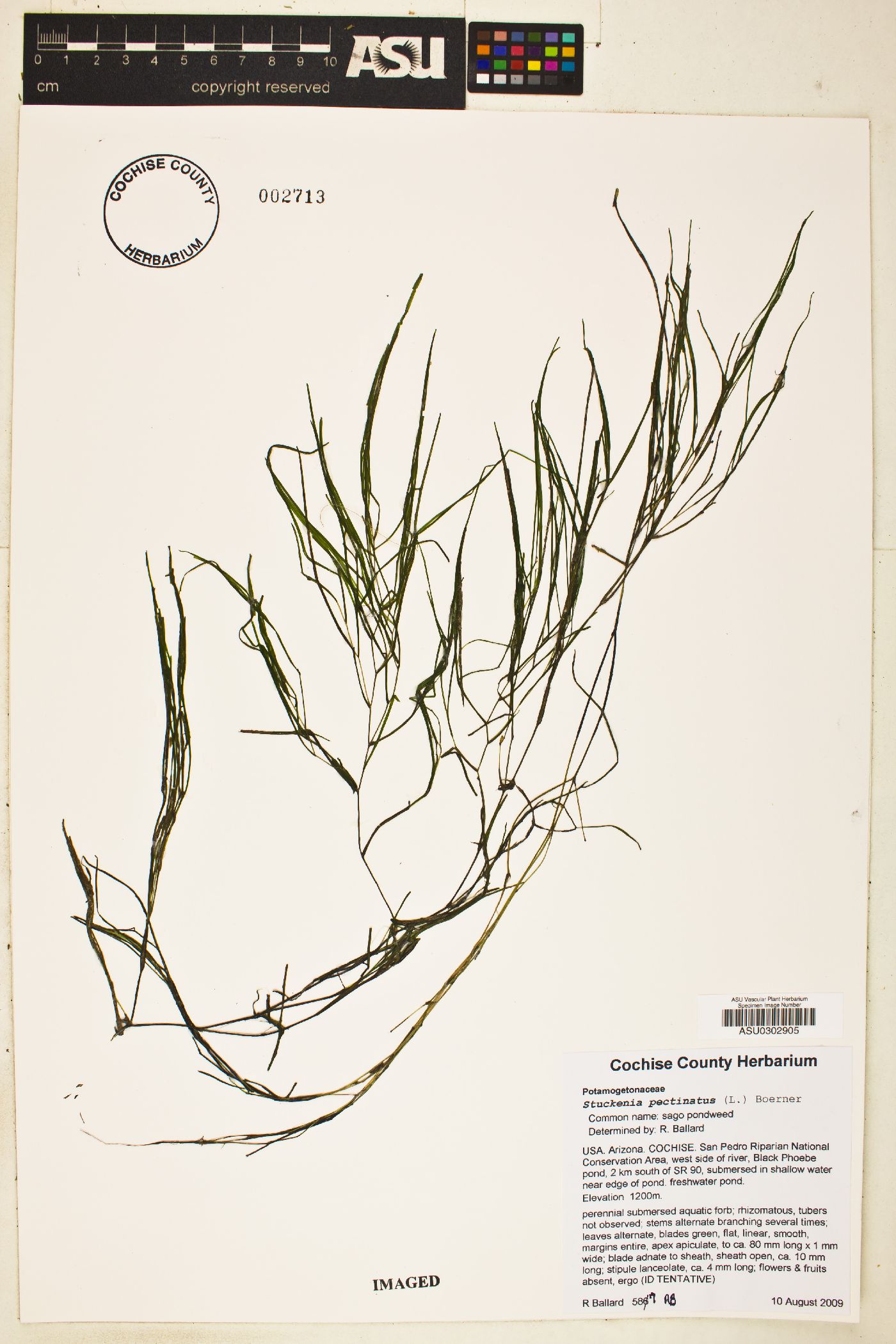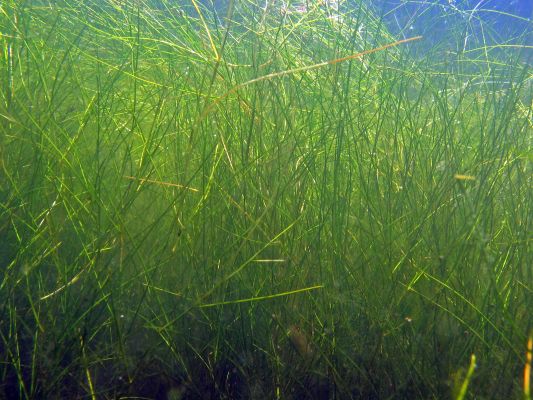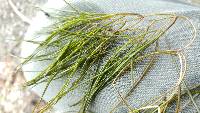|
|
 Leaves Cochise County Herbarium - Arizona State University; Usage Rights: Creative Commons Attribution-ShareAlike |  Leaves Adrian Jones @ http://ian.umces.edu/imagelibrary/displayimage-topn-0-882.html; Usage Rights: Creative Commons Attribution-ShareAlike |  Plant William Thomas, Indiana University Southeast Herbarium; Usage Rights: Creative Commons Attribution-ShareAlike | | | |
|
Origin:
Native
Life Cycle:
Perennial Similar Species: Stukenia filiformois
General Desc:
Aquatic plant grows totally underwater. Slender stems are much branched at the top. Thread-like leaves spread out in a fan-shape beneath the water's surface. Tiny, brownish-green flowers grow in whorls on a spiked stalk resembling a string of beads.
Identification notes: Rhizomatous forb; distinguished from other Stuckenia by the open sheath that is fused to the blade for most of its length. Leaves narrow; tips pointed, all immersed; well branched, especially toward stem tips, stems rounded to slightly compressed.
Height:
To about 2-1/2 feet
Habitat Description: Shallow ponds, streams, lakes, rivers, estuaries (where a river or stream meets the ocean) and slow-flowing marshes (low-lying waterlogged land). Grows in fresh, chalky (having limestone) and brackish (somewhat salty) waters.
Plant Communities:
Riparian
Elevation: 3500 - 6000 feet
Color:
Brownish-green
Shape:
Inconspicuous in elongated clusters
Tubular:
N
Flowering Period:
Jun - Sep
Description:
The flower stalk is an upright, cylindrical spike 1/2 to 1-1/2 inches long with 2 to 6 irregularly spaced whorls of tiny bead-like flowers. Each flower is about 1/8 inch across with 4 tepals (sepals and petals) and a base that narrows abruptly.
Leaf Color:
Medium green to olive-green
Leaf Type:
Simple
Leaf Shape:
Narrow
Leaf Margin:
Smooth
Leaf Attachment:
Alternate
Leaves Clasp:
N
Hairs:
No
Spines:
N
Leaf Description:
Cylindrical, light green to whitish stems are about 1/8 inch wide. Leaves are 1-1/2 to 5 inches long, to 1/16 inch wide with a finely pointed tip. At the leaf base are small greenish or whitish sheath-like growths (stipules) that wrap around the stem.
Fruit Color: Yellowish-brown to brown
Fruit Type: Achene
Fruit Notes: Fruit is plump, rounded along the back with an egg-like shape. It has a projection at the top which curves inward and is about 1/16 inch long. The fruit is 1/16 to 1/4 inch long and about 1/8 inch wide. 1 plant can produce more than 60,000 tiny fruits.
Seed Notes: Seeds form at the top of the flower spike. 1 seed is produced by each fruit. When the fruit matures, seeds often fall into the water as they easily detach from the fruit. The seeds are then dispersed by the wind or waterbirds.
|
|